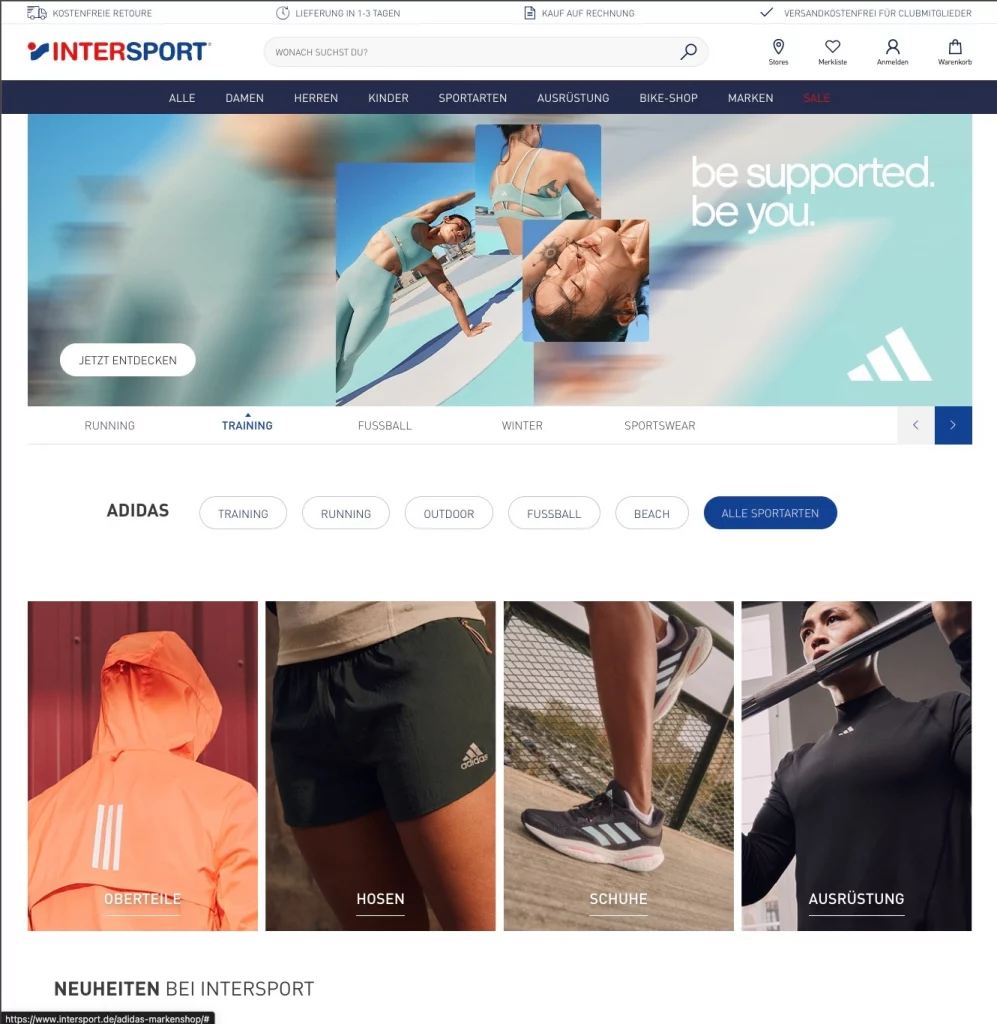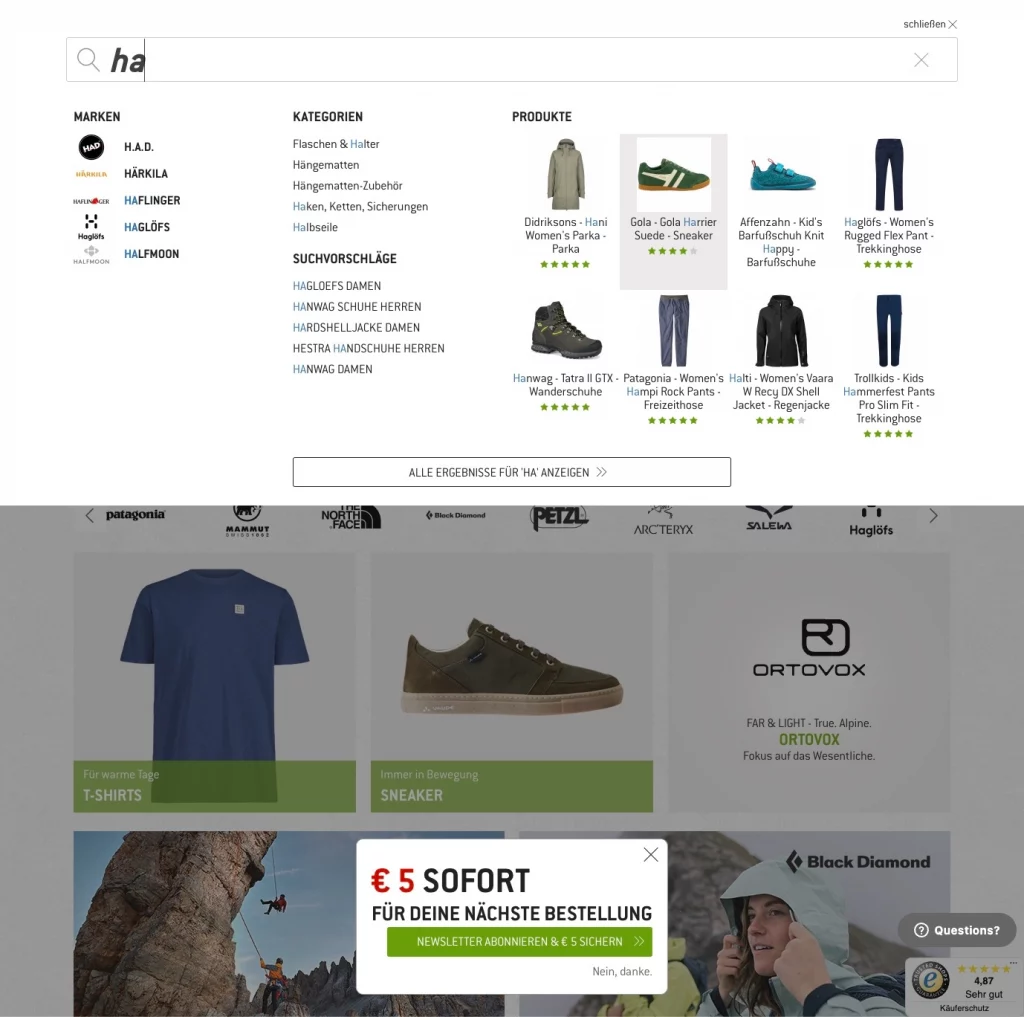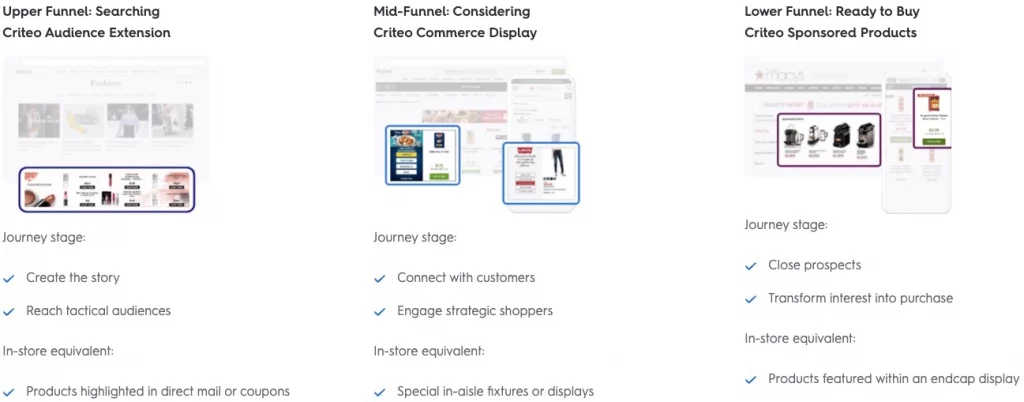In the world of online shopping, customers often start their search with a product’s brand name. For ecommerce retailers, it is essential to lead this “brand search” traffic to a dedicated landing page that highlights the associated products and provides a seamless user experience.
Site search is an essential aspect of ecommerce, especially on mobile devices, where customers may prefer to search for products rather than browsing through multiple pages. But retailers, and their ecommerce directors, are strapped for time and resources. It’s no wonder that Baymard Institute, found 70% of ecommerce sites fail to provide a satisfactory search experience. So if you’re looking for just one thing to change about your site search, how about optimizing brand searches? Imagine the customer experience improvement and increased likelihood of conversions simply by optimizing brand searches within your site search. Baymard goes on to discuss the importance of testing and measuring the effectiveness of site search to continuously improve it. We may all have heard it a thousand times over, after all, site search optimization is not a new topic. And, even still, shops are failing at this elusive task. Thankfully, Baymard continues to beat the drum, driving us all to a more focussed and mature understanding of what brings the greatest gains in online retail optimization.
It’s safe to say that the road to measurable customer journey optimization and employee resource allocation is achieved by clearly understanding both how customers use your webshop, and secondly, how to improve their journey, today.
Site Search - Understand How Customers Interact with Your Shop
How do you efficiently get a better picture of site search resources (tech and employee time spent) to make better decisions regarding which optimizations need to be prioritized and identify any missing functionality
Site Search Performance Measurement
Number one: Can you accurately measure your site search performance?
Onsite search is notoriously broken. Retailers continuously optimize site search issues that don’t bring the expected return. This is largely due to the proliferation of Google Analytics. A cheap tracking and analytics solution that comes at the cost of accurate insight. This is no fault of its own. GA does not purport to be the ideal solution for onsite search tracking and analytics. But that doesn’t keep retailers from treating it that way.
Imagine a way to track onsite search customer journeys without sessions being lost or unable to rationalize search revenues as a result of filters being set, customers using the browser “back” button, or an onsite campaign being triggered. This type of solid, no-nonsense site search tracking technology is the backbone behind searchHub’s search optimization success. This search tracking solution is one-of-a-kind and allows us to track customer search journeys throughout sessions and no matter the underlying site search technology being used.
Site Search – Improve the Customer Journey!
Number two: can you pinpoint what needs to be optimized in your customer’s site search journey and improve it now?
Ecommerce retailers are prepared to optimize anything they can measure. This makes it easy to articulate a business case. But cleanly tracking search, throughout the customer journey, has always been an issue. This increases the challenge of creating a seamless and efficient search experience for customers.
So, now imagine you have a system in place that makes it easy to identify which site search optimizations will provide the greatest uplift in customer satisfaction, based upon how they interact with your webshop. A solution that tells you what to optimize next, no matter the underlying site search technology you use, and provides the tools you need to make the necessary changes now!
That’s searchHub.
Thinking Outside the Search Box
So, let’s assume you’re using searchHub. What types of KPIs would you begin optimizing straight out of the gate? You might be surprised: there are a few aspects of the customer journey which are directly influenced by site search, but not often associated with it.
The following is a short list of where to begin creating a better customer journey by leveraging searchHub to optimize your existing site search.
1. Optimize your site search for brand terms
To ensure that your brand search traffic leads to specifically curated landing pages, you first need to ensure that your site search can handle different variations (e.g. adidas, adadis, addidas, addias, adiddas etc.) of brand names, including misspellings, abbreviations, and different word orders. Additionally, consider adding predictive search suggestions and autocomplete functionality to make it easier for customers to find the brands they’re looking for.
2. Create dedicated landing pages for brand searches
This second point builds on the previous one. Your search can handle any misspelling or variation of the brands in your catalog? Now, the hard work of ensuring a seamless user experience, by creating a dedicated landing page for brand searches, ensues. Landing pages showcase a brand’s products and provide customers with an easy-to-use filtering system that allows them to narrow down their search results. Make sure to include relevant information such as product reviews, ratings, and pricing to help customers make informed purchase decisions.

3. Optimize Suggest for Brand Searches
The autocomplete functionality your search engine provides, is often the first interaction customers have with the brands in your shop. Making these visible as early as possible in the customer journey increases the overall shop usability. Retailers can use smartSuggest to train the search algorithm to prioritize brand-related search terms and suggest relevant products. This can be achieved by tagging and categorizing products by brand, and using this information to inform the smartSuggest algorithm. Additionally, retailers can monitor the performance of the smartSuggest feature, using searchInsights, and over time and make adjustments to optimize its performance.
4. Use retail media ads in site search
Retail media is a form of advertising that allows brands to promote their products on the websites of retailers or marketplaces. By using retail media ads in site search, brands can increase their visibility and drive more conversions. Target the right audience, use relevant keywords, and track the performance of retail media ads to optimize them over time.
5. Use data to personalize the user experience
searchHub’s searchCollector provides a host of search behavior data, giving granular insight into how customers interact with search throughout their journey. What has been placed into, and then removed from, the basket? Which products have been seen but not clicked? Which products bring the most revenue, compared to those with the greatest profit? This anonymous information, tracked no matter the underlying site search technology, provides the ability to personalize search results and suggest relevant products that match customer interests. Not only will this improve the user experience, but also increase the likelihood of conversions.
Conclusion
Unlocking site search potential requires a strategic approach that focuses on customer needs and behavior. Begin by optimizing site search for brand terms, create a dedicated landing page, optimize smartSuggest, use retail media ads in site search, and personalize the user experience using data. By implementing these strategies, ecommerce sites can create a personalized brand experience for their customers, showcase their products effectively, and ultimately drive revenue.















